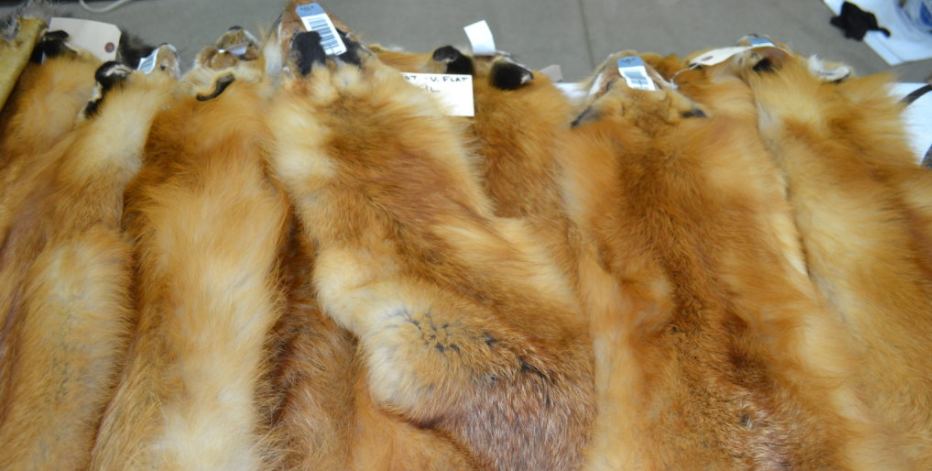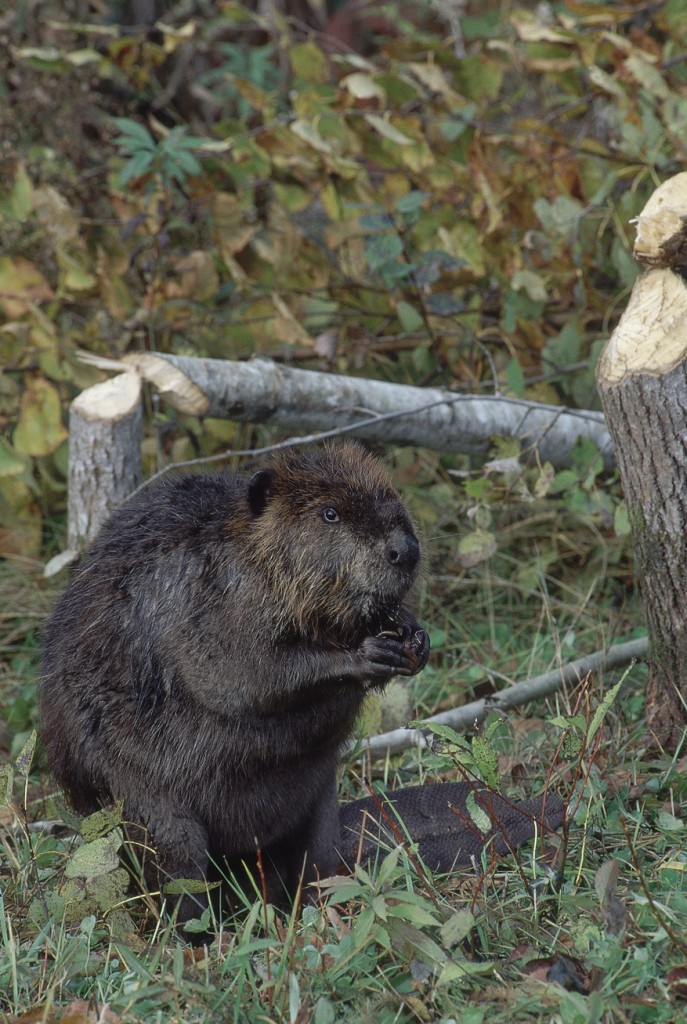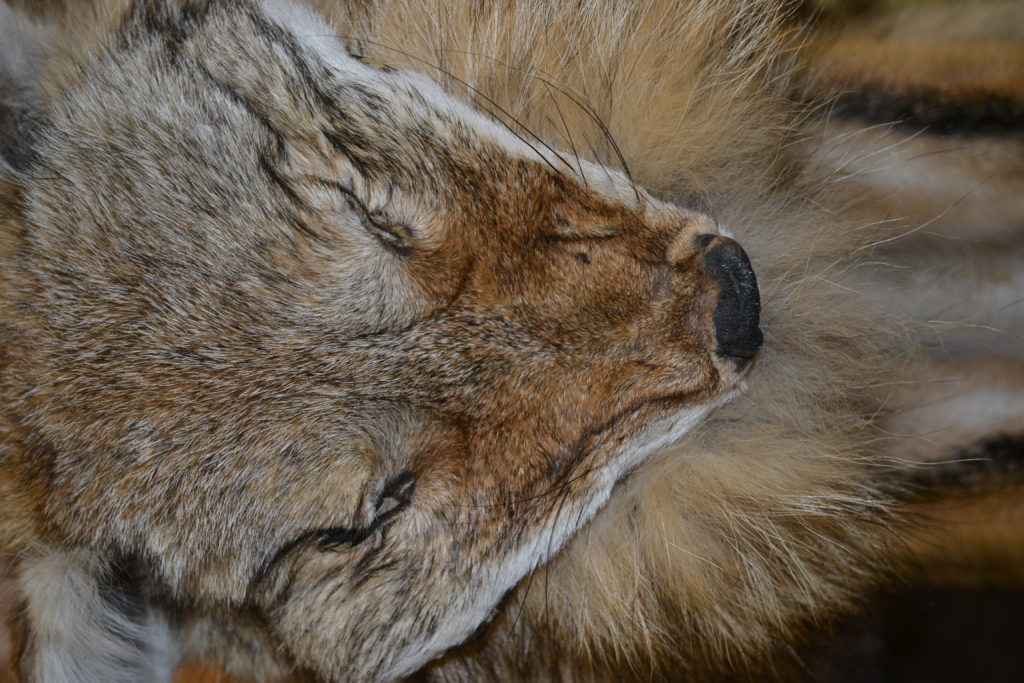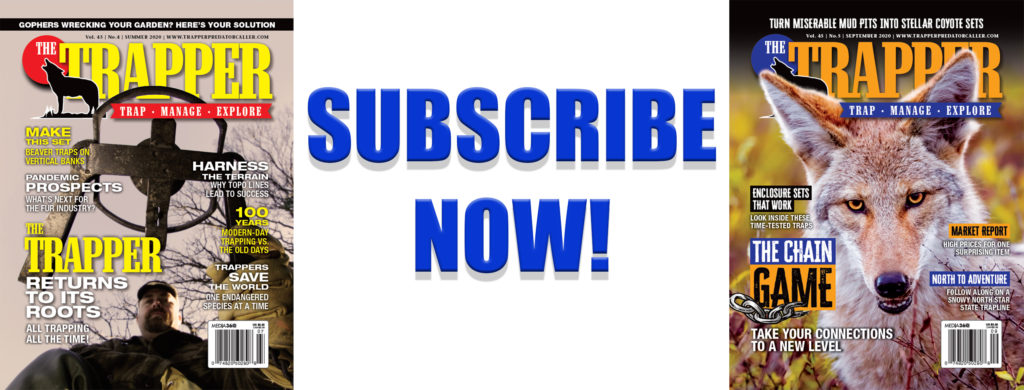By Serge Lariviére
Fall is now in full swing and most trappers know what to expect market-wise. Times have been tough in terms of fur prices for many years now, and most trappers know to keep their profit expectations low. We keep hoping that things will change, but we seem to be stalled at the bottom of a cycle with very few indications that anything will change.
In a nutshell, prices this year will almost undoubtedly resemble what they were last year. Not much has changed on the global scale — war in Russia, economic uncertainty, and COVID-19 still impact social gatherings, city-wide lockdowns in China, and consumer confidence throughout the world. We face some tough issues when it comes time to sell, and we face tough issues when it is time to fill up the truck to go trapping. This is really one case where the resource is there, animal populations are healthy and competition is low, but the economic incentive is probably at an all-time low.
To go trapping today is a question of passion, dedication and creativity. Niche markets for taxidermy goods, local tourist shops, selling directly to small-scale manufacturers, are all options worth exploring. If you aim to target the global fur market, the best strategy remains to target quality more than quantity: catch fur when it is prime, maximize the use of exceptional animals for taxidermy or wall-hangers, and avoid handling low-quality skins. When markets are tough, buyers can access top-quality goods and large sizes for the same price as they historically were buying smaller or even damaged goods.
Beavers seem to rise slowly as the hatter market is heating up. Prices are nowhere near what we would like, but at least there is a market, and this is good news for trappers all over. The “hatter market” is a market that uses beaver underfur for making felt for high-quality hats. In simple terms, the manufacturers remove the guard hairs and then shave the underfur from the leather so it can be processed into felt. This market requires prime skins, but is more forgiving of slight damages and leather defects since there is no dressing of the leather. But because felt is sold by weight, larger skins have more underfur, so are more valuable, and small skins are less desirable. In other words, this market prefers large beavers, even with small defects, compared to perfect, fully prime small beavers. If you target beavers, the larger skins will be your best value. Moreover, large beavers have bigger castor glands, and the castoreum market still remains strong, albeit slightly less than last year. Expect castoreum prices to range from $60 to $80 USD per pound — and handle it well.
Raccoons remain difficult to move. Raccoon skins are a Russian market item, and this basically stalls any sizable market orders for this species. Many speculators have already loaded up on extra-large, fully prime raccoon skins and most are still in storage. I suspect the raccoon harvest probably is the lowest it has ever been, and doubt that anybody aims to run longlines of raccoon sets this year. If you enjoy catching ‘coons — at least wait until they are fully prime and target the biggest ones you can — the big boars of late November, and handle them well. At low prices, I suspect the custom skinners probably charge what the pelt is worth, so catch fewer and be selective in what you decide to skin, flesh and dry.
Marten is a little bit of an unknown because of the war between Russia and Ukraine. Russia produces a ranch sable, which is usually the standard that sets marten prices. With Russia at war and the possibility that some countries may decide to boycott Russian sables, there is speculation that this may help move American marten prices forward. Time will tell, but any advance in this key species for Northern trappers would be appreciated.
Another staple for trappers, muskrats, are unlikely to move up again this year. Ranch mink prices are still, in many cases, below production costs, and manufacturers can use cheap ranch mink skins instead of muskrat pelts for the same purposes. Low ranch mink prices almost always equal low muskrat prices. The same can also be said for wild mink, and even for river otters.
Coyotes have clearly dropped off the most-wanted list, and there is very little demand right now — even for the best skins from the West. Too bad for trappers who enjoyed the parka-trim fashion craze for years and record prices that we are unlikely to see again anytime soon. It was fun while it lasted, but now coyotes are back to normal — or even lower-than-normal levels.
Red and gray foxes will be low again this year, but cross or silver foxes do very well considering the tough market for long fur. If reds struggle to reach the $10 mark, cross and silver foxes continue to average $20 to $30, so catch them if you can!
Interestingly, taxidermy goods such as wolverine, big timber or arctic wolves, arctic foxes, beautiful bears, all sell very well. The commercial fur market may struggle, but the taxidermy world seems to be busier than ever, so pay attention to special animals, extraordinary skins, anything that may interest your local taxidermist. A call to your local taxidermist may also point out special needs for skulls, claws or other products that you may harvest and sell for more than just the skin.
All in all, we are still facing a difficult market with no indications of a quick turning point. Enjoy your time in the field — there is much more to trapping than just the profit!





